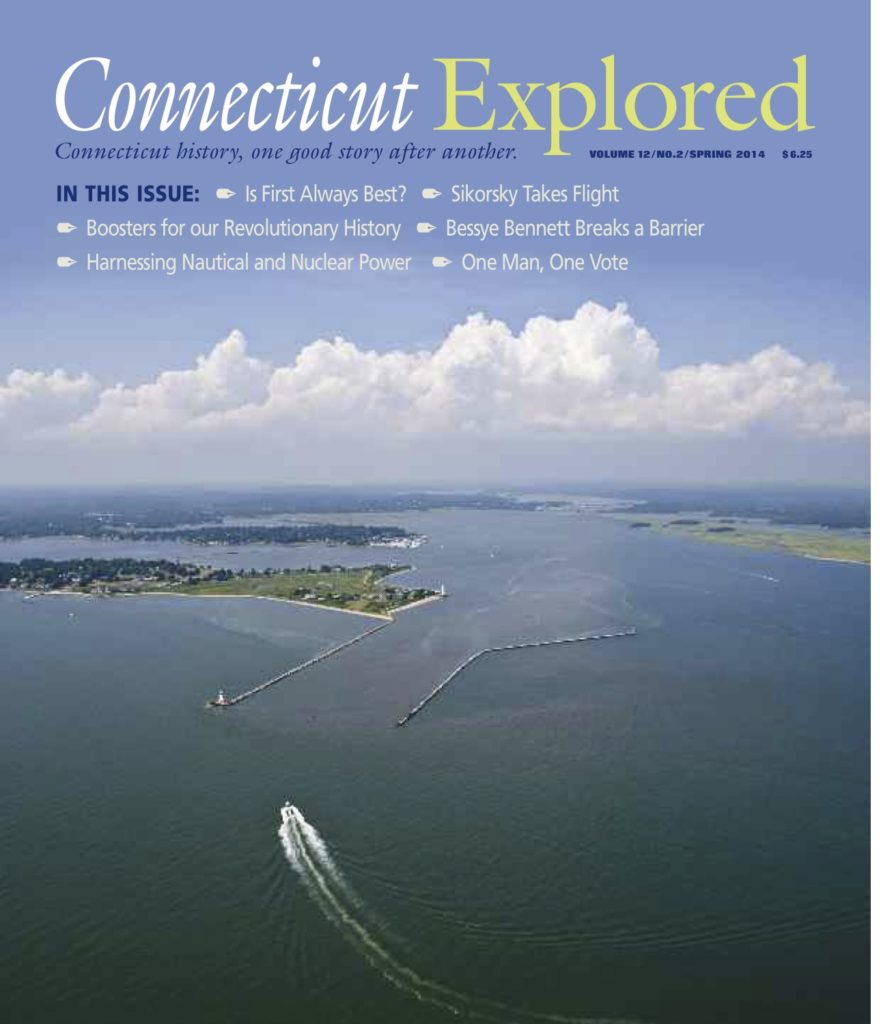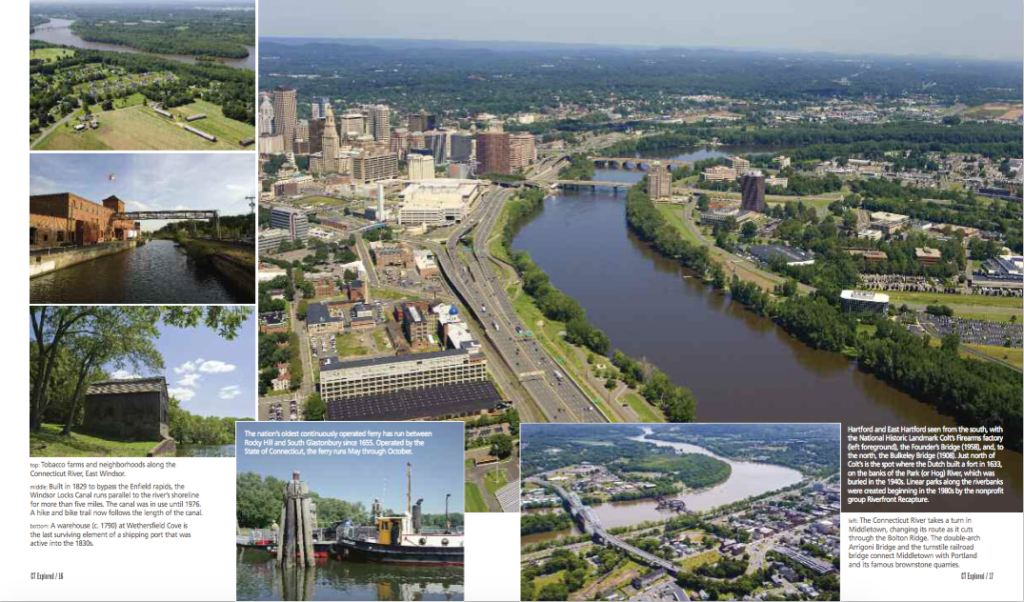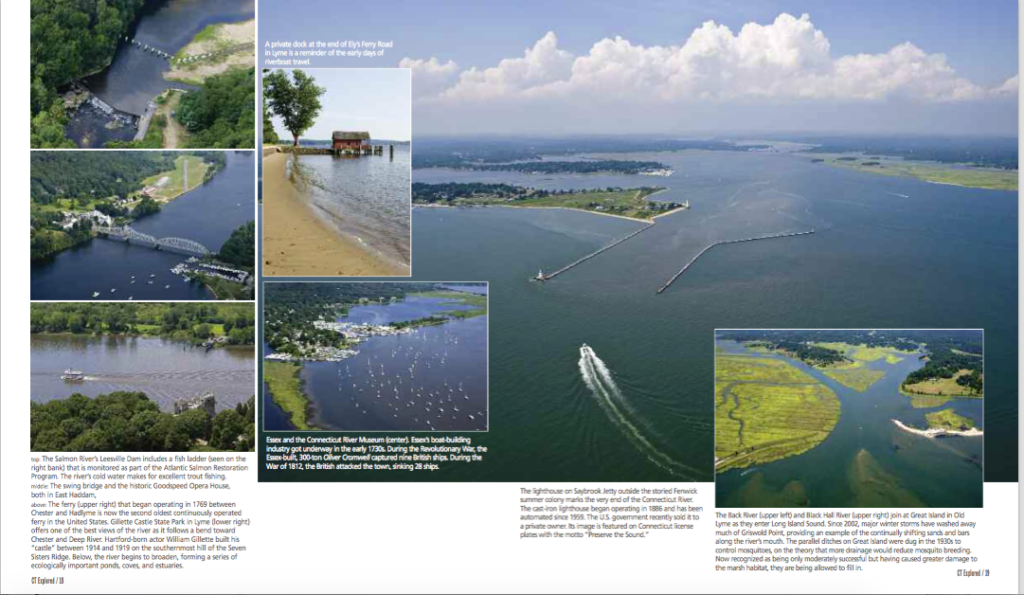
Mouth of the Connecticut River. photo: Al Braden, The Connecticut River: A Photographic Journey Through the Heart of New England (Wesleyan University Press, 2009)
The Connecticut River
Connecticut is named for a river. The river runs right through its middle. The Native Americans called it Quinnetukut, or “the long tidal river.”
It is easy to see on a map where the Connecticut River ends. It empties into Long Island Sound. But where does it begin? It begins far north, near the border of the United States and Canada.
The Connecticut River flows south between Vermont, New Hampshire, Massachusetts, and Connecticut. It is 410 miles long. The place where it ends is called the mouth of the river.
First Europeans Arrive
Native Americans lived along the river for thousands of years. 400 years ago, Dutch trader Adriaen Block was exploring by ship. His ship was called the Onrust. He wanted to trade with the Native Americans.
Block found the mouth of the Connecticut River in 1614. He and his crew sailed the Onrust up the river. They met the Podunk Indians near where Hartford is today. They were the first Europeans to meet the Podunks. They built a trading post on the riverbank.
English settlers arrived in the 1630s. They came over land from Massachusetts. They weren’t only interested in trading. The English were searching for farmland. They also wanted to practice their Christian religion the way they wanted to.
The first English settlements were “the river towns” of Windsor, Hartford, and Wethersfield. At the mouth of the river, Englishmen built a fort at Old Saybrook. Hartford grew to become a city and the state capital, but the other river towns stayed small.
A River Economy

Connecticut River, photo: Al Braden, “First National Blueway Runs Through Connecticut,” Connecticut Explored, Spring 2014. Al Braden, The Connecticut River: A Photographic Journey Through the Heart of New England (Wesleyan University Press, 2009)
During the next 200 years, more settlers came. Communities formed in the fertile river valley. Farms and factories were built along the Connecticut River. Some factories were built along smaller rivers that flow into the Connecticut River. The factories used smaller rivers’ flowing water to power their machines. The factories dumped their waste into the rivers. Pesticides from the farms drained into the Connecticut River.
A River for Recreation
The Connecticut River, like many in America, became polluted and unsafe for swimming or recreation and for wildlife. The United States Congress passed the Clean Water Act in 1972. The law was passed to stop the polluters. Ten years later, the Connecticut River was clean again. Today, people can picnic in parks along the river. Boaters in kayaks and canoes explore the river’s banks. People in powerboats speed by. Bald eagles can be found along the river again.
The State Fish
The state fish is the American shad. It returns to the Connecticut River each spring to lay its eggs. Shad swim from Long Island Sound as far as Bellows Falls, Vermont. The fish have to swim up man-made fish ladders to get over two dams along the way.
Shad are exciting to fish for! The U.S. Fish and Wildlife Service reports that the world record shad was caught in the Connecticut River. 30,000 to 70,000 shad are caught each year. You can buy shad from your local fish store each spring and cook it for dinner.

“First National Blueway Runs Through Connecticut,” Connecticut Explored, Spring 2014. Photos: Al Braden, The Connecticut River: A Photographic Journey Through the Heart of New England (Wesleyan University Press, 2009)
Before there were roads, the river was the way the Native Americans and Captain Block traveled. Today you can drive on a highway over and beside the river. Watch for “the long river.” When you see it, think about the river’s long history. Most of all, think about how the Connecticut River remains at the heart of our state.
This story is based on “First National Blueway Runs Through Connecticut,” by Elizabeth Normen, Connecticut Explored, Spring 2014.
About Shad:
U.S. Fish & Wildlife Service, Connecticut River Coordinator’s web site




